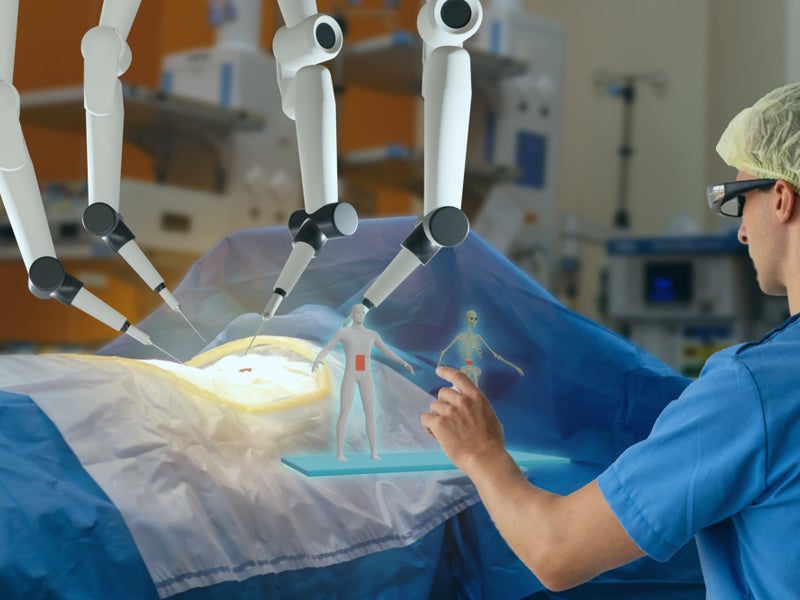As AR and VR technologies mature, the lowering cost of hardware and device delivery, and increasing education content and health-related applications, is creating a growing demand for wearable devices across emerging markets. Markets such as Asia Pacific (excluding Japan), Central and Eastern Europe, Latin America, and the Middle East and Africa are beginning to use more and more wearables as their healthcare infrastructures improve and their access to technology increases.
Listed below are the major milestones in VR/AR technology in the healthcare industry, as identified by GlobalData.
1956 – Sensorama, considered to be one of the earliest VR systems, was invented.
1968 – The first VR HMD, The Sword of Damocles, was created.
1977 – Developed at MIT, the Aspen Movie Map enabled users to take a virtual tour of Aspen, Colorado.
1984 – Jron Lanier founded VPL Research, one of the first companies to develop and sell VR products.
1991 – The first VR arcade machine, Virtuality, was introduced.
1994 – Sega introduced its VR-1 motion simulator in its SegaWorld arcades.
2007 – Google introduced Street View, which provides panoramic views of locations.
2010 – The first prototype of the Oculus Rift headset was designed.
2014 – Facebook acquired Oculus for $2bn.
2014 – Sony announced the launch of Project Morpheus, a VR headset for its PS4 console.
2015 – Apple awarded the patent for a head-mounted display apparatus.
2015 – Google launched Cardboard, which uses a head mount to turn a smartphone into a VR device.
2015 – Samsung launched the Gear VR headset.
2015 – The HTC Vibe headset, developed by HTC and Valve, was unveiled at Mobile World Congress.
2016 – The first-generation Oculus Rift device was released.
2016 – Sony introduced PlayStation VR (PSVR).
2017 – Microsoft launched the Xbox One X, it VR-ready games console and headset.
2018 – Facebook revealed camera-loaded glasses optimised for ‘social VR’.
2018 – Facebook released its untethered Oculus Go headset.
2018 – Lenovo’s Mirage Solo, the first headset running Google Daydream, became available.
2019 – Sony announced that it had sold more than 4 million PSVR headsets.
2021 – More than 85 million VR headsets will be use in China, according to PWC.
2023 – Cloud-based VR gaming will be increasingly prominent, supported by 5G networks.
2030 – VR will be a $28bn market, while AR will be a $76bn market, according to GlobalData forecasts.
This is an edited extract from the Virtual/Augmented Reality in Healthcare – Thematic Research report produced by GlobalData Thematic Research.





